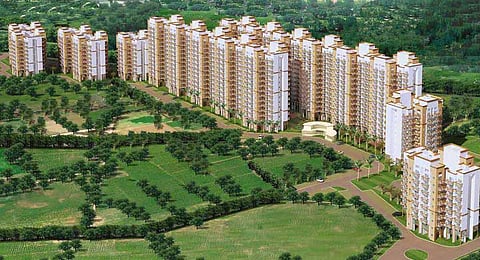Affordable Housing – A Lot More Remains To Be Done, Says CSE’s Pilot Assessment In Telangana
New Delhi, January 1 (TNA) When investments in affordable housing are expanding under Central and state government housing schemes, on-ground assessment of emerging building stock in states shows there is still considerable scope of reducing heat gain in buildings, improving ventilation and day-lit areas to improve thermal comfort for all and reduce energy intensity of built structures.
This has emerged from the pilot assessment of the affordable housing schemes – the Dignity Housing Scheme – in Telangana, carried out by Centre for Science and Environment (CSE).
It also shows that as new development is getting pushed beyond the city’s periphery due to the constraint of land availability, provision of services including education, healthcare, transport and decentralised services of sanitation and water in close proximity have to improve. Otherwise, this can reduce liveability and sustained occupancy making investments wasteful.
This new report – Guidelines for Affordable Housing in Telangana -- was released by the Special Chief Secretary, Government of Telangana, Arvind Kumar, in a meeting organised jointly by CSE and Administrative Staff College in Hyderabad recently. This brought together wide spectrum of target groups including regulators, building industry, architects, academia, civil society actors, among others.
“The assessment has underscored the importance of integrating thermal comfort requirements when real estate recovery is expected to add millions of dwelling units to the formal housing stock in the next three-four years in the country. Otherwise, the new infrastructure can lock in enormous energy and resources guzzling when India has to meet an ambitious target of billion tonne of carbon reduction by 2030 for climate mitigation,” says Anumita Roychowdhury, executive director, research and advocacy at CSE. In fact, India’s Cooling Action Plan (ICAP) has projected the cooling demand to increase 11 times in buildings between 2017-18 and 2037-38.
This thermal comfort analysis has assessed key parameters including openable window-to-floor area ratio that indicates potential of using natural wind for ventilation in the building.
“This is particularly important in view of the ambition of the ICAP that has set a target of reducing cooling demand by 25-30 per cent and reducing cooling energy requirements by 20-40 per cent by 2037-38 and has asked for setting thermal comfort standard”, says Rajneesh Sareen, programme director, sustainable habitat at CSE.
About the study: CSE has assessed Telangana state government’s 2BHK scheme -- Dignity Housing -- that allots dwelling units to poor households free of cost. This draws support from the central scheme of Pradhan Mantri Awas Yojana (PMAY) and from the state government. State Department of Municipal Administration and Urban Development (MAUD) and Telangana State Housing Corporation Ltd (TSHCL) are implementing the scheme. Greater Hyderabad Municipal Corporation (GHMC) is also at the helm.
This has assessed and simulated the building design, material and layout plan currently being adopted in housing projects to verify adoption and effectiveness of thermal comfort requirements related to ventilation, building orientation, exposure, thermal transmittance properties of materials, shading devices, daylighting approaches among others. These are required under the key regulations of Eco Niwas Samhita 2018, Energy Conservation Building Code for residential buildings (ECBC-R) and National Building Code 2016 (NBC).
This thermal comfort analysis has assessed key parameters including openable window-to-floor area ratio that indicates potential of using natural wind for ventilation in the building. Visible Light Transmittance that indicate potential of using daylight; and residential envelope transmittance value that is a measure of net heat gain rate through the building envelope (walls etc).
This study has also assessed the liveability aspects of the settlements including locational characteristics of sites, layout of building clusters and access to basic services like education, health care and transportation.
This has also simulated and demonstrated how by changing some basic features like building orientation, shading of buildings, materials with lower heat gain, day lighting and ventilation can help to increase thermally comfortable hours for all including low income groups and reduces dependence on energy guzzling cooling devices.
Different building typologies were selected from Telangana’s two climate zones — composite and warm-humid -- D Pochampally, Kollur II (high-rise typology), and Gajwel (ground+1) in Composite climate zone; and YSR Nagar (ground+2) in warm-humid climate zone. The building clusters include Kollur II, D Pochampally, Dundigal, Ambedkar Nagar, Dhupakunta, Gajwal, Mulugu, YSR Nagar, Vandanam, and Chintakunta.

